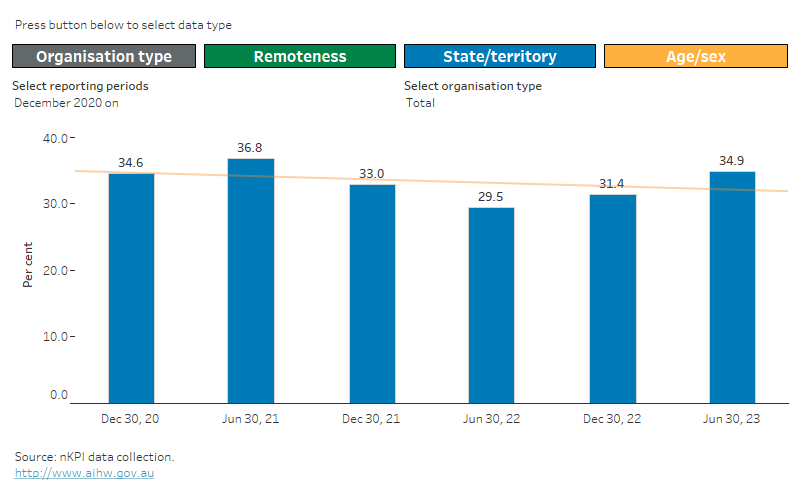Health check – aged 0–14 (PI03)
This indicator is the proportion of First Nations regular clients aged 0–14 who had an Aboriginal and Torres Strait Islander Peoples Health Assessment (health check) within the previous 12 months.
It is collected for males and females in age groups:
- 0–4
- 5–14.
There have been changes to the specification of this indicator over time. For more information see Interpreting nKPI data.
Ages 15 and over are also collected for PI03, with data presented under the Preventative health domain.
Why health checks are important
Through Medicare, First Nations people can receive an Aboriginal and Torres Strait Islander Peoples Health Assessment from their doctor, as well as referrals for follow-up services. The Aboriginal and Torres Strait Islander Peoples Health Assessment was introduced in recognition that First Nations people, as a group, experience some particular health risks. The aim of the health check is to encourage early detection and treatment of common conditions that cause ill health and early death.
At June 2023, 35% (or around 36,300) of First Nations regular clients aged 0–14 had a health check within the previous 12 months (Figure 1).
Figure 1: Health check aged 0–14 by reporting period
Health check aged 0–14 by reporting period
This Tableau visualisation shows the percentage of First Nations child regular clients aged 0–14 who had an Aboriginal and Torres Strait Islander Peoples Health Assessment in the previous 12 months, by reporting period for either:
- organisation type (ACCHO, non-ACCHO, Total)
- remoteness area (Major cities, Inner regional, Outer regional, Remote, Very remote, Total)
- state/territory (NSW/ACT, Vic, Qld, WA, SA, Tas, NT, Total).
There a selector with two different time periods:
- December 2020 to June 2023
- June 2017 to June 2020.
Data supporting this visualisation are available in Excel supplementary data tables at Data.

Notes
- In December 2020, specifications changed for this indicator and data from that point on cannot be compared with previous periods. For more information see Interpreting nKPI data.
- For more information, including on interpreting changes over time, see Technical notes.
For more information on health checks for ages 0–14 see Data.


